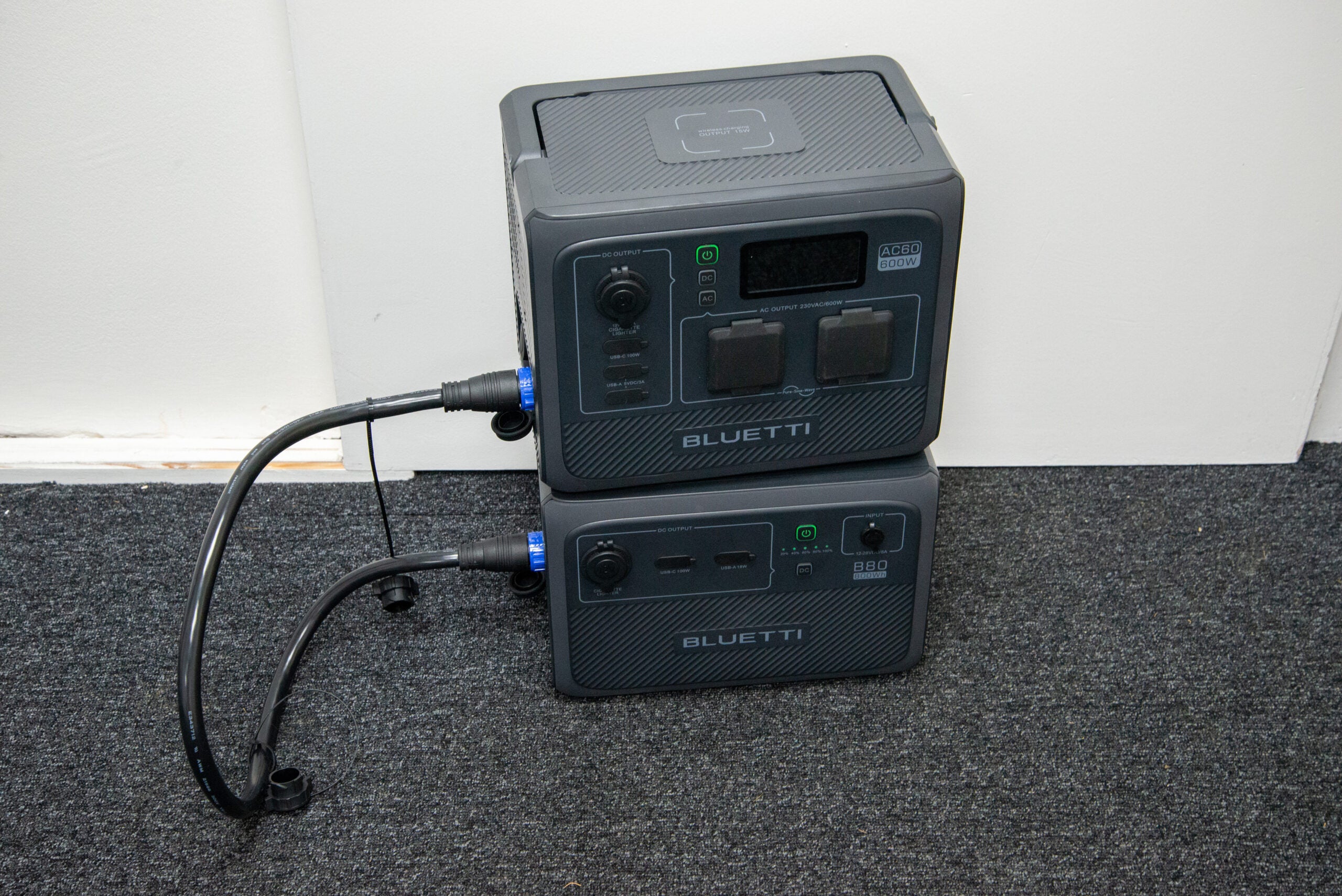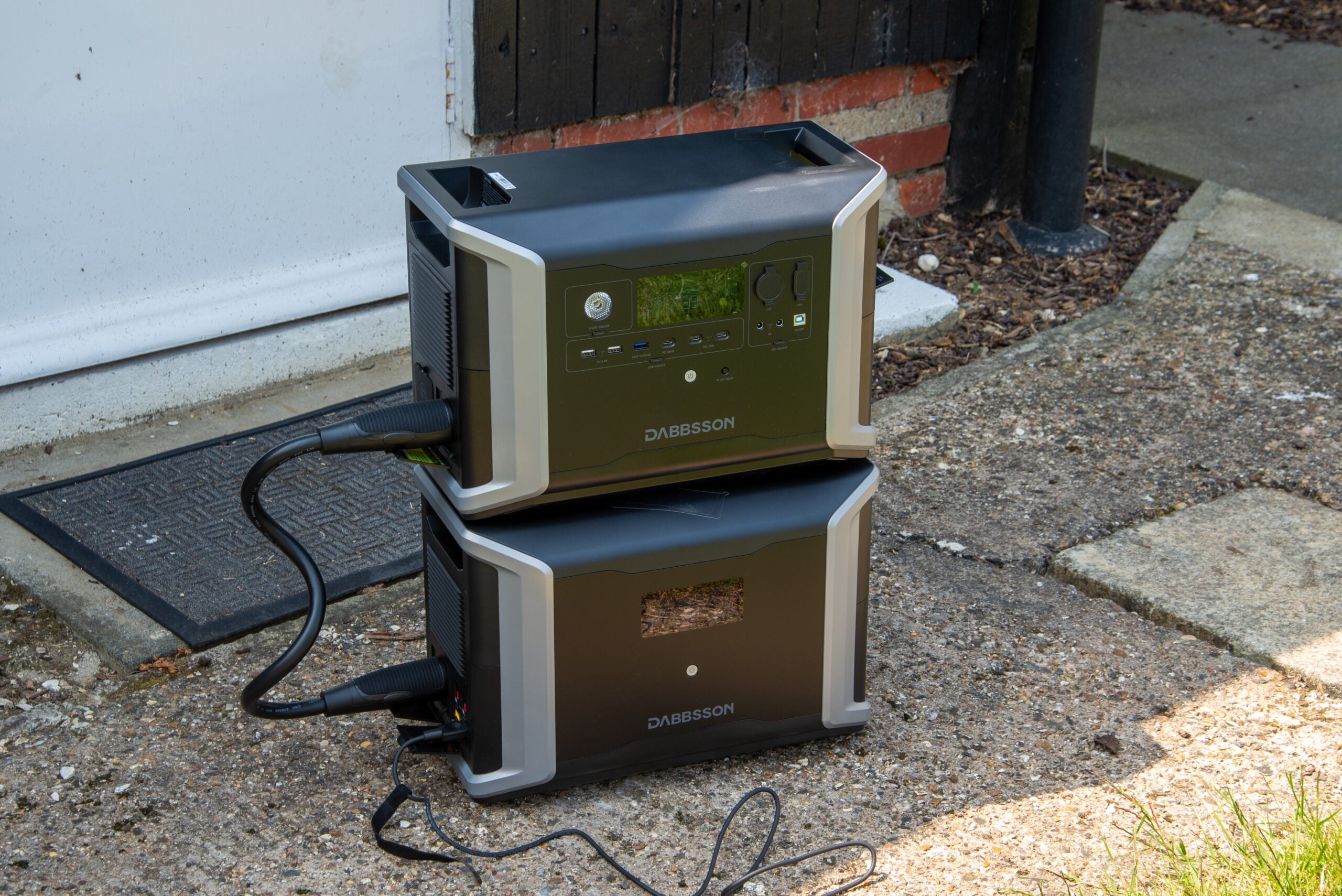[ad_1]
Verdict
If you would like a compact, rugged and sensible energy provide for tenting journeys or weekends away, the Anker PowerHouse 521 Photo voltaic Generator is nigh-on excellent. Combining an honest vary of ports, good battery efficiency, and a 100W photo voltaic panel, it might be all you must hold cellphones, laptops and even a mini-fridge in enterprise whereas away from the facility. It’s not low cost, nevertheless it’s impressively helpful.
Execs
- Good vary of ports and features
- Compact and never overly heavy
- Good battery efficiency
Cons
- Not superb for AC backup or UPS use
-
A small, solar-charging energy financial institutionThis set combines a 256Wh energy financial institution with 100W photo voltaic panels, offering modest off-grid energy topped up by sunshine -
vary of ports and featuresBetween the panels and energy financial institution there are many ports, a lightweight, and a very good show
Introduction
Go to a pageant or spend a weekend tenting, and inside a day, your telephone may have run out of cost, and any cool meals can be melting.
The Anker 521 Photo voltaic Generator is certainly one of a rising vary of merchandise designed to assist with that. Bought as a set, it combines Anker’s entry-level PowerHouse 521 moveable energy provide with the Anker 625 photo voltaic panel, which is rated at 100 watts (100W).
At £500/$499, it’s a bit dangerous to take it to a pageant, nevertheless it’s superb for many different tenting journeys – particularly if the solar’s shining. The 521 presents an honest vary of ports, together with a mains plug socket, whereas the bundled photo voltaic panels add two extra USB ports for good measure.
Design and options
- Fairly moveable, mild and rugged
- Good choice of ports and features
- Good, considerate design and format
The Anker PowerHouse 521 is about as compact as mains-capable energy banks get. It’s the scale of a toaster, and weighs 3.7 kilograms – not dangerous given it’s filled with batteries.
These are lithium iron phosphate (LiFePO4 or LFP), which provide extra long-term sturdiness than commonplace lithium-ion (Li-ion). They’re rated for over 3000 cost cycles: sufficient to completely cost and drain the 521 each day over greater than eight years. Anker says it’s constructed for 10 years’ use, and backs that up with a powerful five-year guarantee.

Regardless of its compact measurement, the Anker PowerHouse 521 presents two USB-A ports, one USB-C, a 12V car-type (cigarette) port, and a single AC socket. Every USB-A port has a 12W most, whereas the USB-C helps USB Energy Supply (USB PD) as much as 60W – sufficient to energy smaller laptops. The automotive outlet tops out at 120W, whereas the AC socket solely goes as much as 200W, which is sufficient for laptops and different small units, however not power-hungry devices like espresso machines.
You should purchase the Anker PowerHouse 521 by itself, however I’m testing it right here because the Anker 521 Photo voltaic Generator, which bundles the 521 with the Anker 625 Photo voltaic Panel. Open the cable pouch on this and also you’ll discover an extra 12W USB-A socket, and a USB-C port restricted to 15W. In each circumstances, you’ll solely get that if the photo voltaic panel’s receiving sufficient daylight.
The panel itself is break up throughout 4 sections, which prolong to about 1450x470cm, and fold up neatly to concerning the measurement of a giant provider bag. At 5.1kg it’s a bit of on the heavy facet if it’s a must to lug it far. On the entrance, there’s a small goal designed that can assist you align it totally with the solar, however its legs don’t prolong to mounted angles as we’ve seen on different panels. In my sheltered backyard, they appeared to maintain the panel steady from about 75° all the way down to their roughly 35° most.

This bundle arrives with a three-metre-long photo voltaic cable, which ought to be sufficient to succeed in right into a tent or van. My solely concern with the panel’s neat, cloth design is that it doesn’t look like IP-rated. With that in thoughts, you would possibly have to look out for rain or dew.
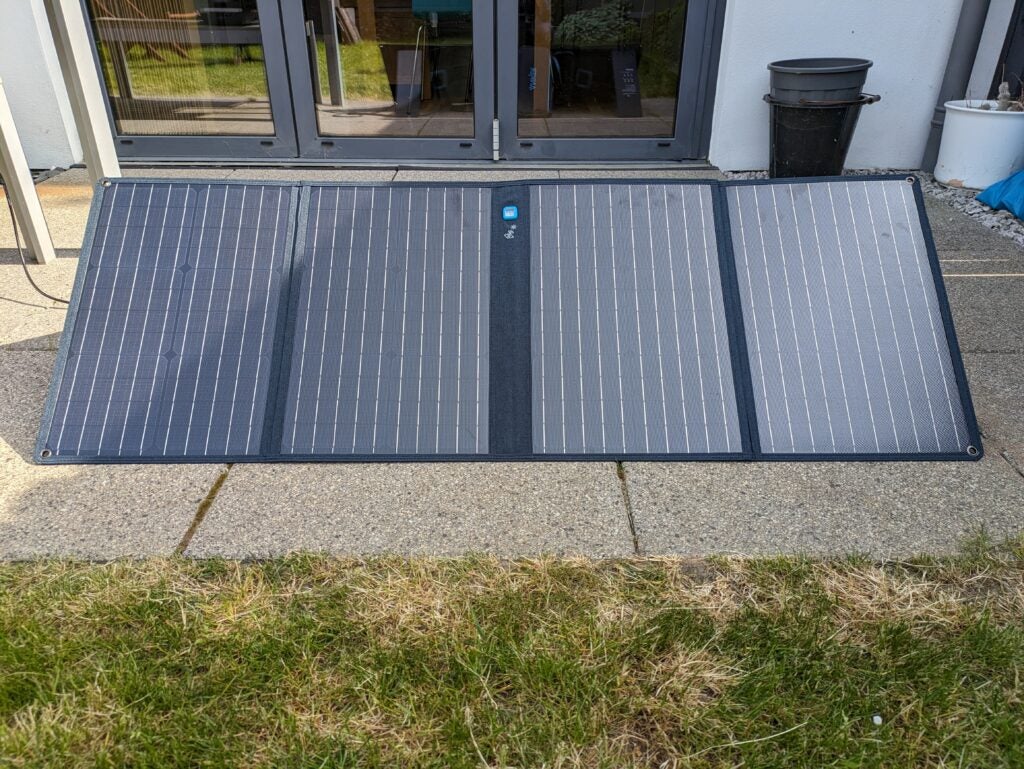
The Anker PowerHouse 521 shops a most of 256 watt-hours (Wh) of electrical energy. In different phrases, you may theoretically use it to energy a 50W laptop computer for 5 hours, or a normal PC and monitor for maybe a bit greater than an hour.
Anker has added a couple of neat options to this energy financial institution. There’s a warm-white studying mild that consumes solely about 2W, and a very good show that reveals the cost state, the facility coming in and going out, and an estimate of how lengthy till the battery is charged or empty, relying on the stability.
Each the automotive and AC ports have their very own energy switches. Each have a power-saving function that shuts them off if there’s a low load, however you may disable this if you happen to’re utilizing necessary low-power tools like a CPAP machine.
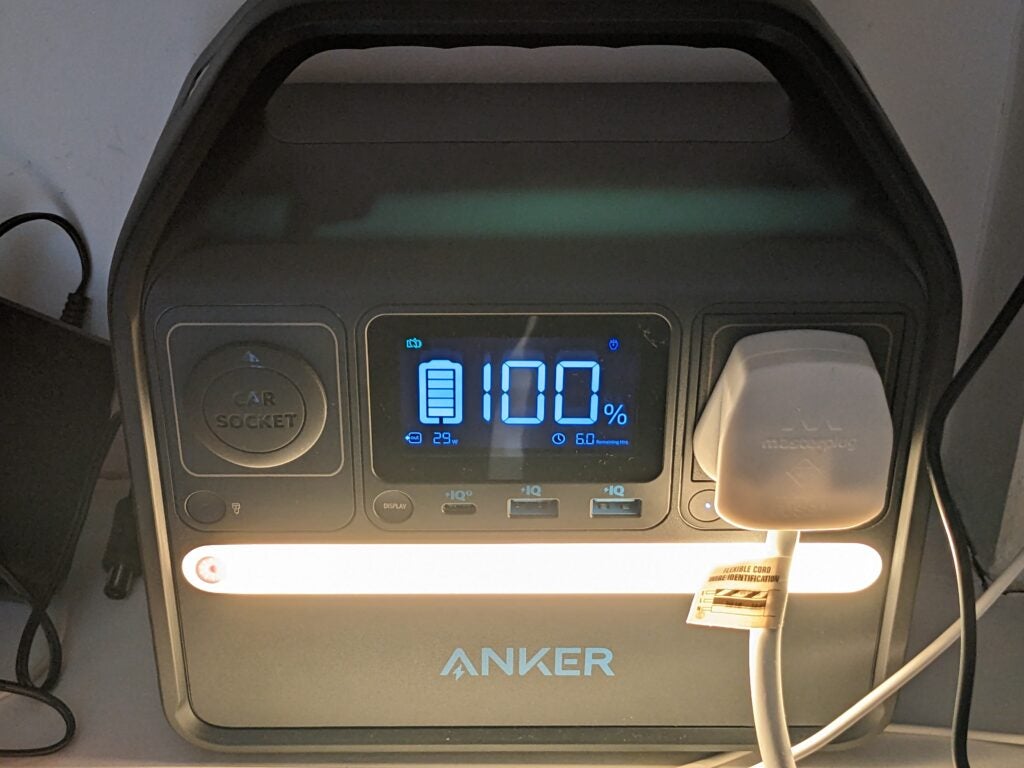
Charging
- Cost from mains, automotive or the solar
- Most 125W enter
- Not superb as a backup
Relating to charging, the Anker PowerHouse 521 is remarkably versatile. You’ll be able to join its equipped 65W energy adaptor, automotive adaptor or photo voltaic panels to its rear port, utilizing which it could cost totally in about 4 hours.
Cleverly, you can too join a charger to the USB-C port, which can settle for as much as 60W, bringing the recharge time all the way down to about two and a half hours. It’s a disgrace you may’t mix greater than one of many automotive, photo voltaic and the equipped AC charger, although – all of them use the identical port.
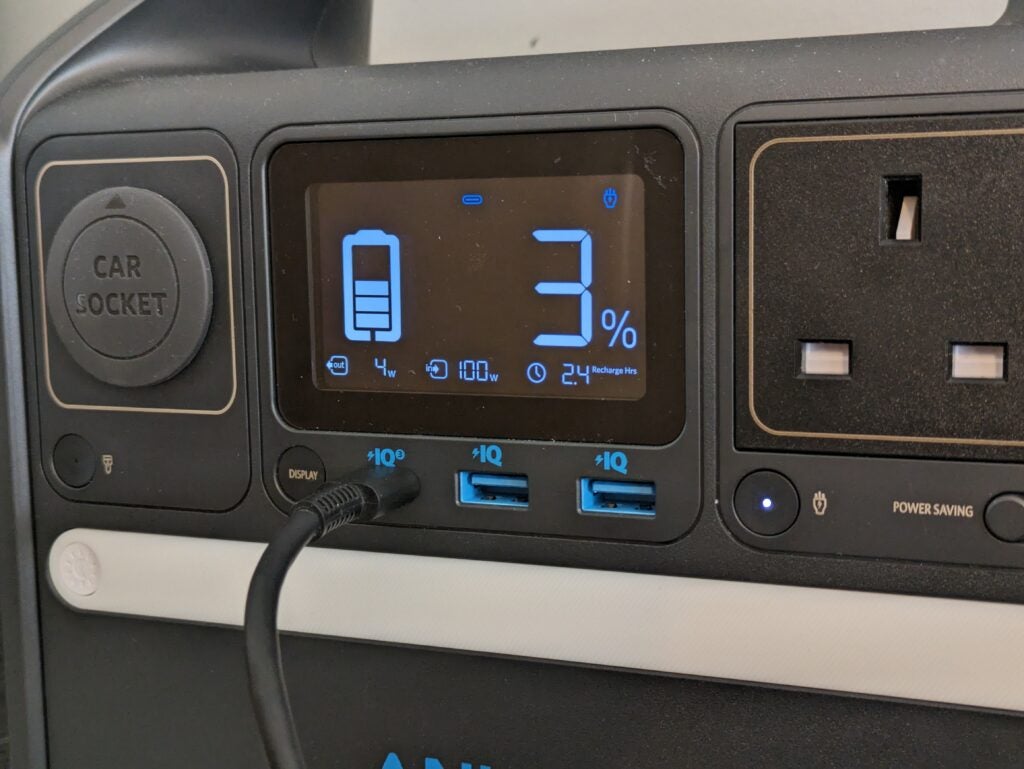
The Anker PowerHouse 521 has sufficient storage to get low-powered tools by means of a brief energy minimize, nevertheless it’s not brilliantly suited to offering backup energy. Its exterior AC adaptor means there’s no mains passthrough mode, which might in any other case provide mains energy on to any plugged-in load without having to be transformed to direct present and again. That limits its most output, and causes some inefficiency when working on mains energy.
As it’s, if the load is bigger than the 65W the adaptor can provide (or 125W if you happen to’re additionally utilizing an extra USB-C charger), it’ll discharge the battery.
The 625 Photo voltaic Panel produced a few watts simply from the diffuse mild at 8am, however like all photo voltaic panels, it’s at its finest in direct solar. Left related on a sunny day, with the 521 shaded beneath, it was totally charged from empty by 3:15pm, suggesting the panels and energy financial institution are effectively matched for summer time use. That stated, if I’d additionally related a load – maybe a 10W mini-fridge – I may need wanted to re-align the panels a couple of occasions for max effectivity.
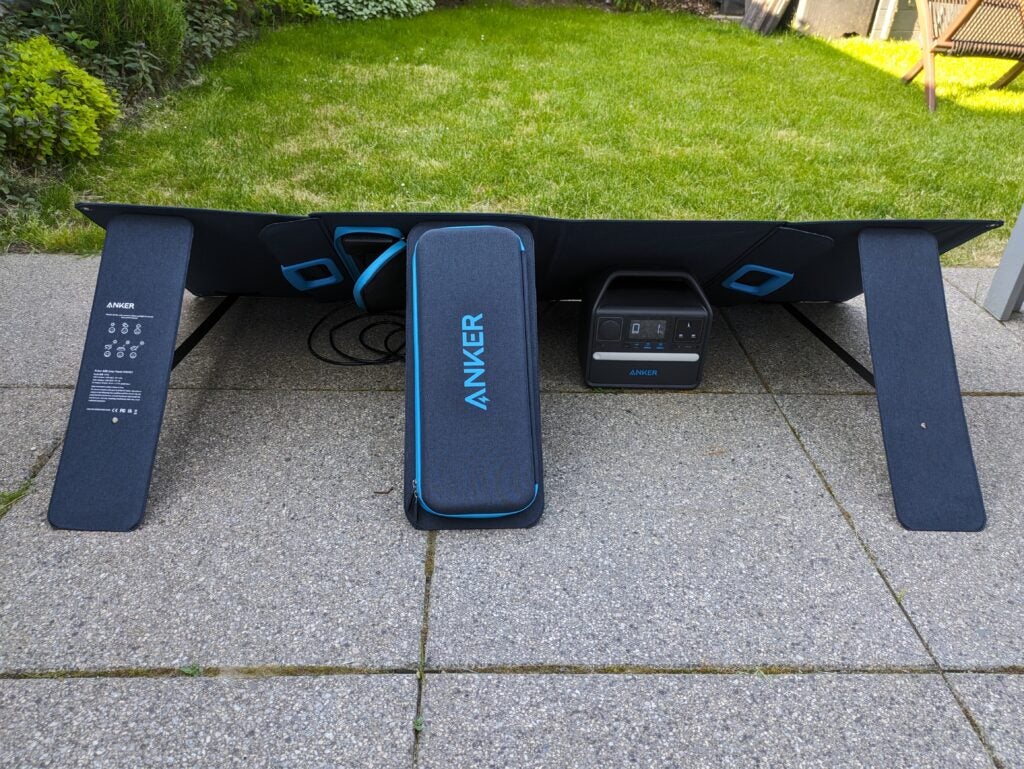
Though the 625 Photo voltaic Panel is rated at 100W, the PowerHouse 521 is restricted to a 65W photo voltaic enter. It was simple to hit an indicated 63W, even when the panel wasn’t completely aligned to the solar, however that’s the utmost enter I recorded throughout my assessments. In superb circumstances it’s sufficient to completely recharge the 521 in a bit of over 4 hours.
Efficiency
- Secure energy output and behavior
- Affordable effectivity
- Largely silent on mild masses
It was a while earlier than I realised that the PowerHouse 521 was even outfitted with a fan. Throughout charging and my light-load assessments it was completely silent, with no apparent buzzing and only a small quantity of heat on the high of its case. This energy financial institution’s 65W AC adaptor has to work fairly onerous, nonetheless, and it could get nearly too scorching for extended dealing with throughout charging, or when serving to energy a heavy load.
I examined the 521 with a relentless 33W load from an air air purifier. On battery alone it lasted for 5 and a half hours, having equipped a complete of 177Wh, in accordance with my mains energy meter. Assuming it consumed the total 256Wh from its battery, that’s a discharge effectivity of 69%. Linked to a heavier load totalling across the 200W most this rose to 189Wh (74%). It was throughout this take a look at that I heard the cooling fan for the primary time, working gently at first, then stepping as much as a considerably quicker velocity. It was by no means harsh or significantly loud.
I measured a complete consumption of 279Wh to completely recharge the battery. Once more, assuming that this totally stuffed the battery, that’s a powerful charging effectivity of 92%. My figures give a finest round-trip effectivity (cost and discharge) of 68%, which means lower than a 3rd of the mains electrical energy I saved was misplaced. I ought to level out that I solely measured the 521’s AC output, which makes use of an inverter to create alternating mains energy, at the price of a couple of watts’ energy consumption. In case you’re solely utilizing USB, you’ll get extra from every saved cost.
I examined the 521 barely past its rated 200W mains energy output. It managed to produce a measured 215W for a couple of minutes, earlier than shutting itself off. Examined with a a lot heavier load it shut down immediately. In backup mode, there was no warning when this energy financial institution approached the tip of its battery cost and, when it reached it, it shut down. In case you’re getting low, you’ll have to keep watch over the show.
When totally discharged, the Anker PowerHouse 521 received’t present mains energy till it’s been recharging for a couple of minutes – at an indicated 2%. I discovered that, if the followers had been working when it ran out of energy, they restarted throughout charging and continued till the battery pack was totally cooled, however they weren’t in any other case wanted given the leisurely cost velocity.
Taking Anker’s claimed 3000-cycle life and a cost stage of 80%, this energy financial institution can retailer a complete of 614 kilowatt-hours (kWh) throughout its lifetime. Calculated for the value of the Anker PowerHouse 521, that works out at a really aggressive 37.6p per kilowatt hour (p/kWh). Issue within the photo voltaic panels and it’s 81.4p/kWh.
Newest offers
Do you have to purchase it?
You want off-grid energy for small units: This is a wonderful, small solar energy financial institution for telephones and light-duty units, particularly in the summertime.
You want backup AC energy: The Anker PowerHouse 521 shouldn’t be superb for offering backup AC energy, typically.
Ultimate Ideas
General, the Anker PowerHouse 521 is a wonderful moveable energy bundle, offering you aren’t anticipating an excessive amount of. Its modest output and capability, taken with its lack of bypass mode, imply it’s not fitted to backup or emergency mains energy typically.
In case you want one thing small, with extra energy, then the Bluetti AC60 is a more sensible choice. Follow what it’s constructed for – offering modest off-grid energy – and it’s nice. The PowerHouse 521 excels with low masses like mobiles, laptops or a mini-fridge, has a helpful built-in mild, and is rugged and neatly designed. Purchase it with the 625 Photo voltaic Panel and – on reasonably sunny days – you’re prone to outpace your consumption and revel in indefinite, day-round energy.
How we take a look at
We take a look at each battery station we assessment totally over an prolonged time frame. We use commonplace assessments to match options correctly. We’ll at all times let you know what we discover. We by no means, ever, settle for cash to assessment a product.
Discover out extra about how we take a look at in our ethics coverage.
We take a look at with a wide range of units to see how lengthy the battery will final.
We take a look at completely different charging strategies to see how shortly the battery might be topped up.
FAQs
It depends upon how sunny the climate, what time of yr it’s, and what number of units you must energy. In case you’re simply utilizing a few cellphones and a laptop computer, you would possibly discover you may work off-grid and recharge the battery prepared for some night time time use. In cloudy climate or throughout winter, you in all probability received’t generate sufficient solar energy.
Sure. It comes with the required adaptor, and can be full after about 4 or 5 hours of driving.
Each the PowerHouse 521 and 625 Photo voltaic Panel have handles, and each weigh 5kg or much less. A match individual might simply carry them for a few hundred metres earlier than getting drained. The 521 is compact, and simple to squeeze right into a full boot. The photo voltaic panel could be a bit of trickier to accommodate.
[ad_2]
Source link






























